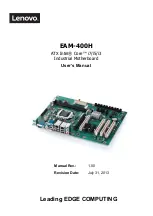System Development and Debugging
MPC885 PowerQUICC Family Reference Manual, Rev. 2
Freescale Semiconductor
53-25
53.3.2.1.4
Freeze
The freeze indication means that the processor is in debug mode (normal processor execution of user code
is frozen). Freeze state is indicated on FRZ and is generated synchronously to the system clock. This
indication can be used to halt any off-chip device while in debug mode and is a handshake between the
debug tool and port. In addition to FRZ, the freeze state is indicated by the value 0b11 on VFLS[0–1],
shown in
Figure 53-8
.
Internal freeze status can also be monitored through status in the data shifted out of the debug port.
53.3.2.2
Development Port Registers
The development port consists logically of three registers:
•
The trap enable control register (TECR)
•
The development port instruction register (DPIR)
•
Development port data register (DPDR)
DPIR and DPDR are both implemented as the development port shift register, which also acts as a
temporary holding register for data to be stored in the TECR.
53.3.2.2.1
Development Port Shift Register
Instructions and data are serially shifted into the 35-bit development port shift register from the DSDI.
DSCK or CLKOUT is the shift clock, depending on the debug port clock mode. See
Section 53.3.2.3,
“Development Port Serial Communications–Clock Mode.”
The instructions or data are then transferred in parallel to the core and TECR. When the processor enters
debug mode it fetches instructions from DPIR that cause an access to the development port shift register.
These instructions are serially loaded into the shift register from DSDI using DSCK or CLKOUT as the
shift clock. Similarly, data is transferred to the core. Data is shifted into the shift register and read by the
processor by executing mfspr[DPDR]. Data is also parallel loaded into the development port shift register
from the core by executing mtspr[DPDR]. It is then serially shifted out to DSDO using DSCK or
CLKOUT as the shift clock.
53.3.2.2.2
Trap Enable Control Register (TECR)
The TECR is a 9-bit register that is loaded from the development port shift register. The contents of TECR
drives the six trap enable signals, two breakpoint signals, and VSYNC signal to the core. The transfer data
to TECR commands send the appropriate bits to the TECR. The TECR is not accessed by the core, but
VFLS0 • 1
2 • SRESET
FRZ • 1
2 • SRESET
GND • 3
4 • DSCK
GND • 3
4 • DSCK
GND • 5
6 • VFLS1
GND • 5
6 • FRZ
HRESET • 7
8 • DSDI
HRESET • 7
8 • DSDI
V
DD
• 9
10 • DSDO
V
DD
• 9
10 • DSDO
Figure 53-8. Development Port/BDM Connector Pinout Options
Summary of Contents for PowerQUICC MPC870
Page 98: ...MPC885 PowerQUICC Family Reference Manual Rev 2 I 4 Freescale Semiconductor ...
Page 118: ...MPC885 Overview MPC885 PowerQUICC Family Reference Manual Rev 2 1 20 Freescale Semiconductor ...
Page 158: ...The MPC8xx Core MPC885 PowerQUICC Family Reference Manual Rev 2 3 18 Freescale Semiconductor ...
Page 288: ...MPC885 PowerQUICC Family Reference Manual Rev 2 III 4 Freescale Semiconductor ...
Page 554: ...MPC885 PowerQUICC Family Reference Manual Rev 2 V 6 Freescale Semiconductor ...
Page 1090: ...UTOPIA Interface MPC885 PowerQUICC Family Reference Manual Rev 2 43 8 Freescale Semiconductor ...
Page 1312: ...Byte Ordering MPC885 PowerQUICC Family Reference Manual Rev 2 A 8 Freescale Semiconductor ...
Page 1336: ...MPC885 PowerQUICC Family Reference Manual Rev 2 D 16 Freescale Semiconductor ...
Page 1358: ...MPC885 PowerQUICC Family Reference Manual Rev 2 D 38 Freescale Semiconductor ...
Page 1370: ...MPC880 MPC885 PowerQUICC Family Reference Manual Rev 2 E 4 Freescale Semiconductor ...
Page 1386: ...Revision History MPC885 PowerQUICC Family Reference Manual Rev 2 I 2 Freescale Semiconductor ...

















